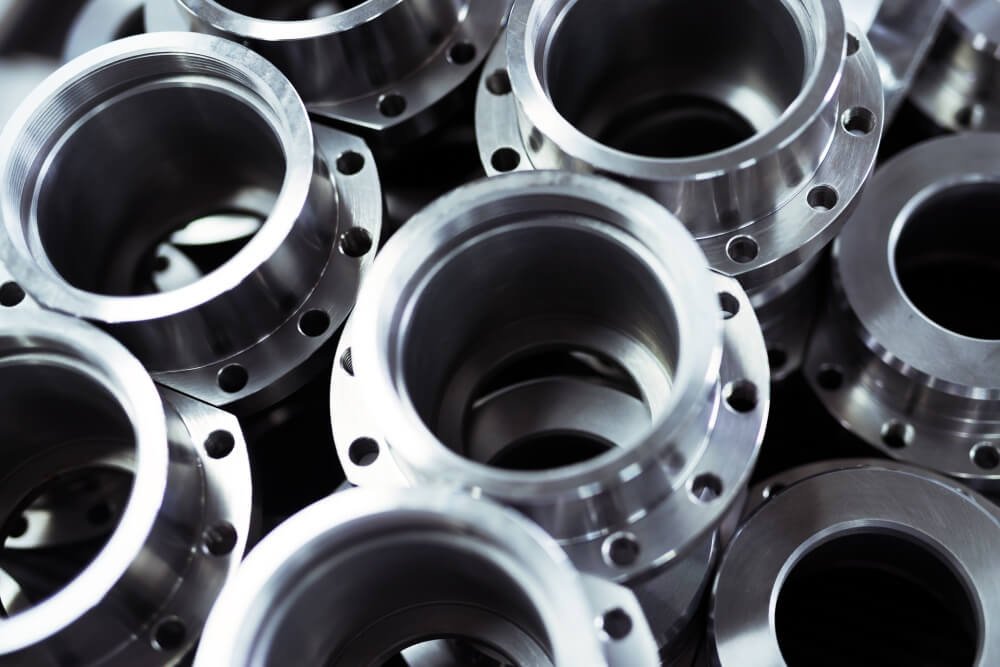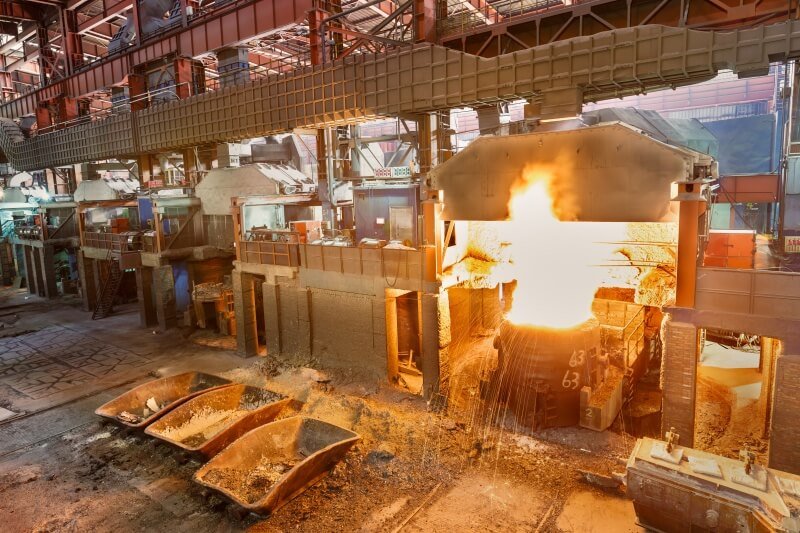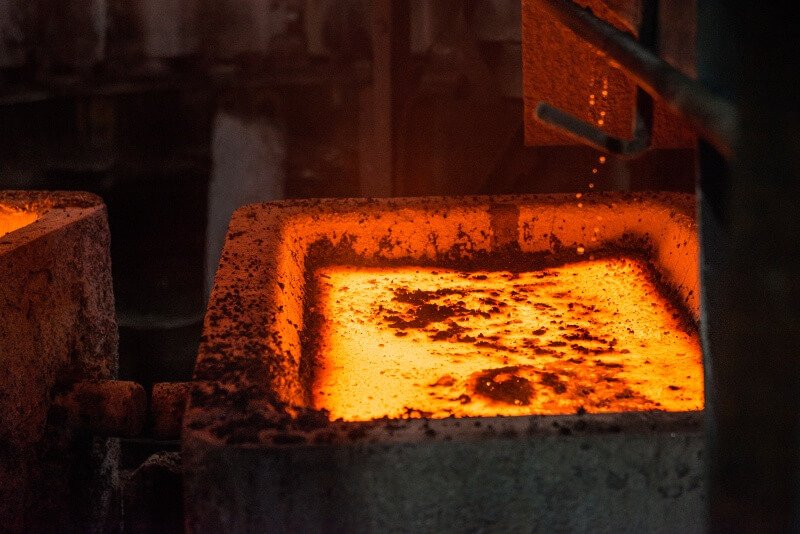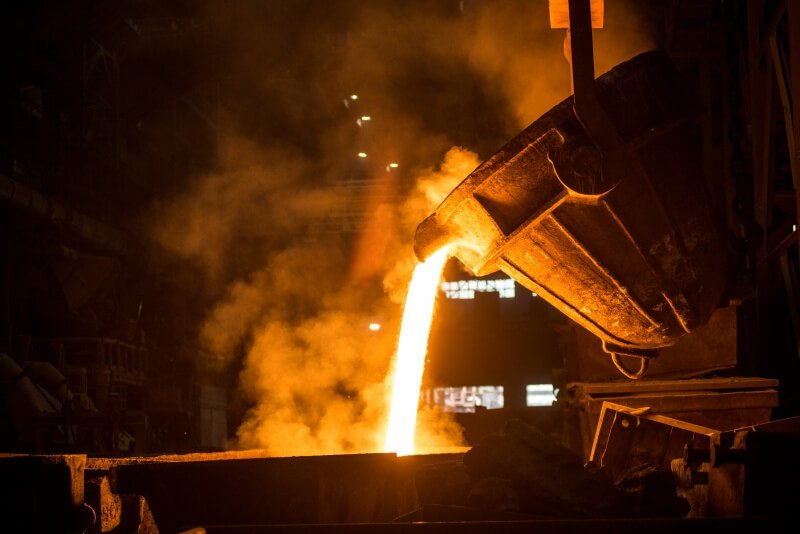Struggling to manufacture complex metal parts with consistent quality, speed, and cost-efficiency? Using slower, less precise, or pricier methods triggers delays, budget overruns, and lost advantage. High pressure aluminum casting solves these challenges by combining speed, precision, and scalability—delivering net-shape parts quickly while controlling cost and ensuring repeatable quality.

The high pressure aluminum casting process
High pressure aluminum casting uses immense force to inject molten metal into a hardened steel die. This rapid process ensures the metal fills every detail of the mold completely before solidifying. It stands as a cornerstone of modern, high-volume manufacturing for complex components.
What is the core principle of this method?
The core principle of this method is the combination of extreme speed and pressure. Here’s the deal: molten aluminum is forced into a mold cavity at high velocity, ensuring a net-shape part is created almost instantly. This approach is far more efficient than slower, gravity-fed casting methods.
- Utilizes positive pressure up to 21,700 psi.
- Injects molten metal into a steel die rapidly.
- Solidifies quickly under pressure to form the final part.
How does pressure affect the final part?
The intense pressure is critical for achieving superior part quality and detail. What does this mean for you? It guarantees the molten aluminum fills even the most intricate sections and thinnest walls of the mold before solidifying. This results in excellent detail replication and a smooth surface finish right out of the mold.
- Creates sharp, well-defined features and corners.
- Minimizes surface imperfections for a clean look.
- Allows for complex designs that other methods can’t produce.
What are the main process variations?
While the main process is standardized, variations exist to enhance quality for specific applications. But wait, there’s more: a vacuum can be applied to the die cavity before injection to remove trapped air. This technique significantly reduces porosity, improving the part’s internal integrity and strength.
- Cold-Chamber Casting: The standard for aluminum, where metal is ladled into a shot sleeve before injection.
- Vacuum-Assisted Casting: Reduces gas porosity, making parts stronger and more reliable.
- Gravity-Fed Casting: A related but slower, lower-pressure alternative for different applications.
Key Takeaway: The high pressure aluminum casting process uses extreme force and speed to create detailed parts, with variations available to further reduce defects like porosity.
| Process Element | Function | Key Benefit |
|---|---|---|
| High Pressure | Forces metal into the mold | Fills intricate details and thin walls |
| Steel Die | Provides a reusable mold | Enables high-volume, repeatable production |
| Vacuum Assist | Removes air from the die cavity | Reduces internal porosity and improves strength |
Complex high pressure aluminum casting parts
One of the key benefits of this process is its ability to produce highly complex and intricate geometries consistently. The immense pressure ensures that molten metal conforms perfectly to detailed mold cavities. This makes it ideal for components requiring precision and a high-quality aesthetic.
How are intricate shapes achieved?
You can achieve complex shapes because the process forces molten metal into every nook and cranny of the die. The bottom line is: this method accommodates stringent requirements for both appearance and dimensional accuracy. It is the perfect choice when part quality cannot be compromised.
- Fills detailed mold cavities completely and uniformly.
- Replicates complex surfaces and features with high fidelity.
- Produces net-shape parts that require minimal finishing work.
Key Takeaway: High pressure aluminum casting excels at creating geometrically complex, net-shape parts that meet strict quality standards right from the mold.
| Feature | Method Used | Outcome for Your Part |
|---|---|---|
| Complex Geometries | High-pressure injection | Precise replication of your design |
| Stringent Tolerances | Hardened steel die accuracy | Consistent quality across the entire production run |
Speed in high pressure aluminum casting
Speed is a defining advantage of high pressure aluminum casting, setting it apart from other manufacturing methods. The process features exceptionally short casting cycles, making it perfectly suited for high-volume production demands. This rapid output allows you to scale up quickly and meet even the tightest project deadlines.
Why is it ideal for mass production?
This process is ideal for mass production because the cycle times are measured in seconds, not minutes or hours. Here’s the deal: this rapid turnaround allows you to produce thousands of identical parts with high efficiency and lower per-part costs. It’s a stark contrast to slower, more labor-intensive methods like sand casting.
- Exceptionally short casting cycles for maximum output.
- Enables highly automated, continuous production lines.
- Reduces per-part labor costs significantly at high volumes.
Key Takeaway: The incredibly fast cycle times make high pressure aluminum casting the definitive process for mass-producing complex aluminum components affordably.
| Aspect | High Pressure Casting | Other Methods |
|---|---|---|
| Cycle Time | Seconds | Minutes or Hours |
| Ideal Volume | High (10,000+) | Low to Medium |
| Automation | High | Low to Moderate |
High pressure aluminum casting finishes
With high pressure aluminum casting, you can achieve a very smooth and consistent surface finish directly from the mold. This high-quality “as-cast” finish often reduces or eliminates the need for secondary polishing or machining. It also provides an excellent, uniform base for various post-processing treatments and coatings.
How does it help with electroplating?
The smooth, non-porous surface created by this process is perfect for subsequent finishing treatments. What does this mean for you? A flawless surface ensures that coatings like paint or electroplating adhere uniformly and look their best. This results in a more attractive and durable final product without extra preparation steps.
- Creates a smooth “as-cast” surface ideal for finishing.
- Provides a perfect substrate for plating, painting, and anodizing.
- Reduces or eliminates the need for pre-treatment surface preparation.
Key Takeaway: This process yields smooth surfaces ready for cosmetic finishes like electroplating, saving you time and money on secondary operations.
| Surface Quality | Benefit for Finishing | Ideal Application |
|---|---|---|
| Smooth Finish | Provides excellent coating adhesion | Electroplating, Anodizing, Painting |
| High Consistency | Ensures a uniform appearance | Consumer-facing products |
High pressure aluminum casting for thin walls
A major advantage of high pressure aluminum casting is its ability to produce parts with extremely thin walls. The high speed and pressure of the injection force the molten metal into narrow cavities before it has a chance to solidify. This is a feat that low-pressure die casting and many other casting methods cannot easily replicate.
Why is this a major advantage?
This capability is a major advantage because it allows you to design lighter, more material-efficient components without sacrificing structural integrity. Here’s the deal: reducing wall thickness lowers both part weight and material costs. This makes your products more competitive and efficient.
- Enables lightweight part design.
- Reduces overall material consumption and cost.
- Maintains structural integrity in complex designs.
Key Takeaway: The ability to cast thin walls gives you the design freedom to create lightweight, cost-effective parts that other processes cannot match.
| Feature | High Pressure Casting | Low-Pressure Casting |
|---|---|---|
| Wall Thickness | Can achieve very thin walls | Limited to thicker sections |
| Part Weight | Lighter | Heavier |
| Material Cost | Lower | Higher |
Tolerances in high pressure aluminum casting
High pressure aluminum casting is renowned for its ability to meet exceptionally tight dimensional tolerances. The use of robust, precision-machined steel dies ensures that every part produced is a near-perfect replica of the last. This consistency is crucial for applications requiring high precision and interchangeability of parts.
How does this reduce secondary machining?
By producing parts that are already very close to their final dimensions, you can significantly reduce or even eliminate the need for costly secondary machining. The bottom line is: creating net-shape or near-net-shape parts saves you time and money in post-production. It simplifies your supply chain and accelerates time-to-market.
- Delivers high dimensional accuracy from the mold.
- Ensures excellent part-to-part repeatability.
- Minimizes the need for CNC machining or other finishing operations.
Key Takeaway: This process achieves superior dimensional accuracy, reducing post-production costs and ensuring consistent quality for intricate designs.
| Aspect | Benefit | Impact on Your Project |
|---|---|---|
| Tight Tolerances | High precision and consistency | Reliable part assembly and function |
| Net-Shape Parts | Reduced secondary operations | Lower costs and faster production |
Costs of high pressure aluminum casting
While the per-part cost is low, high pressure aluminum casting involves significant upfront investment. The primary startup cost is the creation of the hardened steel die, which is complex and expensive to machine. These initial costs are a key factor to consider when evaluating this process for your project.
When are the costs justified for a project?
The high tooling costs are typically only justified for high-volume production runs. Here’s the deal: when you are producing thousands of parts, the initial die cost is spread across the entire run, making the price per piece extremely low. For low-volume or prototype work, other methods are more economical.
- Dies are costly but durable for high-volume runs.
- The per-part price becomes very low at scale.
- Best suited for production volumes in the tens of thousands or more.
Key Takeaway: The high initial tooling cost is offset by a very low per-part price, making this process highly cost-effective for mass production.
| Production Volume | Cost-Effectiveness | Recommended Process |
|---|---|---|
| High (10,000+) | Excellent | High Pressure Casting |
| Low (<1,000) | Poor | CNC Machining or Sand Casting |
Porosity in high pressure aluminum casting
Porosity, or the presence of tiny air pockets inside the cast part, is a potential drawback of this process. It can be caused by air becoming trapped in the die as the molten metal is injected at high speed. While manageable, it is a critical factor that affects the final mechanical properties of the part.
How does porosity affect part strength?
Porosity can compromise the structural integrity of a component, creating internal weak points. What does this mean for you? Parts with high porosity cannot be reliably heat-treated or welded, as the trapped gas can expand and cause micro-cracks. Careful design and process control are essential to minimize this risk.
- Caused by trapped air or gas during injection.
- Can weaken the final part’s internal structure.
- Prevents standard heat treatment and welding.
Key Takeaway: Porosity is a key challenge that must be managed through careful process control, as it can weaken the part and limit secondary operations like heat treating.
| Factor | Cause | Effect |
|---|---|---|
| Porosity | Trapped air during high-speed injection | Reduced structural integrity |
| Heat Treatment | Expands trapped air | Can cause internal micro-cracks |
| Welding | Creates weak, porous joints | Not recommended for structural applications |
Limits of high pressure aluminum casting
As with any manufacturing process, high pressure aluminum casting has certain limitations that may make it unsuitable for some applications. These limitations are primarily related to part thickness, post-processing options, and material choices. Understanding these constraints is key to deciding if this process is right for your project.
Why can’t thick-walled parts be made quickly?
While excellent for thin walls, the process is less efficient for parts with very thick sections. The bottom line is: thicker walls require significantly longer solidification and cooling times. This can offset the primary advantage of rapid injection cycles, slowing down production and increasing costs.
- Best suited for parts with thin, uniform walls.
- Thick sections increase cycle time and the risk of defects.
- May not be cost-effective for bulky, thick-walled components.
Key Takeaway: The process is optimized for thin-walled components; thick sections can slow down production and introduce cooling-related defects.
| Part Feature | Suitability | Reason |
|---|---|---|
| Thin Walls | Excellent | Rapid cooling and cycle time |
| Thick Walls | Poor | Slow cooling, potential for defects |
Materials for high pressure aluminum casting
High pressure aluminum casting is not suitable for all metals. The process is limited to non-ferrous alloys with high fluidity, which allows them to flow quickly and fill the die completely. This ensures that complex details are captured accurately before the metal begins to solidify.
What metals can be used in this process?
The most common materials used are aluminum, zinc, and magnesium alloys. Here’s the deal: these metals have the low melting points and excellent flow characteristics necessary for high-pressure injection. Aluminum alloys like A380 and A383 are particularly popular due to their balance of cost, strength, and castability.
- Limited to high-fluidity, non-ferrous alloys.
- Aluminum is the most widely used material.
- Zinc and magnesium are also common choices.
Key Takeaway: The process is restricted to high-fluidity metals, with aluminum, zinc, and magnesium alloys being the most common materials used.
| Metal | Key Advantage | Common Alloys |
|---|---|---|
| Aluminum | Lightweight, good strength-to-weight ratio | A380, A383, A413 |
| Zinc | Excellent for very thin walls and plating | Zamak 3, Zamak 5 |
| Magnesium | Lightest of all structural metals | AZ91D |
FAQ Section
1. How do I know if high-pressure casting is right for my part? This process is ideal if your project requires high-volume production (typically 10,000+ units) of complex, lightweight parts with thin walls and a smooth surface finish.
2. Can parts made with this process be welded or heat-treated? Generally, no. The potential for internal porosity means that welding and heat treatment can cause micro-cracks and compromise the part’s integrity. However, specialized techniques like vacuum casting can reduce porosity and allow for limited treatment.
3. What is the typical tooling and setup cost for a new project? Startup costs are high due to the need for a custom-machined, hardened steel die. These costs can range from thousands to tens of thousands of dollars but are justified by the extremely low per-piece price in high-volume production.
4. What alloys can I choose from for my high-pressure cast parts? You can choose from a range of high-fluidity aluminum alloys, each with different properties. Common choices include A380 (for a good balance of properties), A413 (for excellent pressure tightness), and B390 (for high wear resistance).
5. How does part complexity affect the final piece price? While the process handles complexity well, more intricate designs increase the initial tooling cost. However, because the casting process is so fast, the complexity has a minimal impact on the final per-piece price at high volumes.
Leverage Our Expertise for Your Next Project
High pressure aluminum casting is the premier choice for mass-producing complex, lightweight parts with superior precision and finish. It delivers the scalability and cost-efficiency needed to stay competitive in today’s market.
Ready to leverage the speed and precision of high pressure aluminum casting? Precisionvast specializes in transforming your designs into high-quality components at scale. Our vision is to be your trusted partner in delivering innovative and cost-effective manufacturing solutions.
Contact us today for a free quote and let our expertise guide you to manufacturing success.




